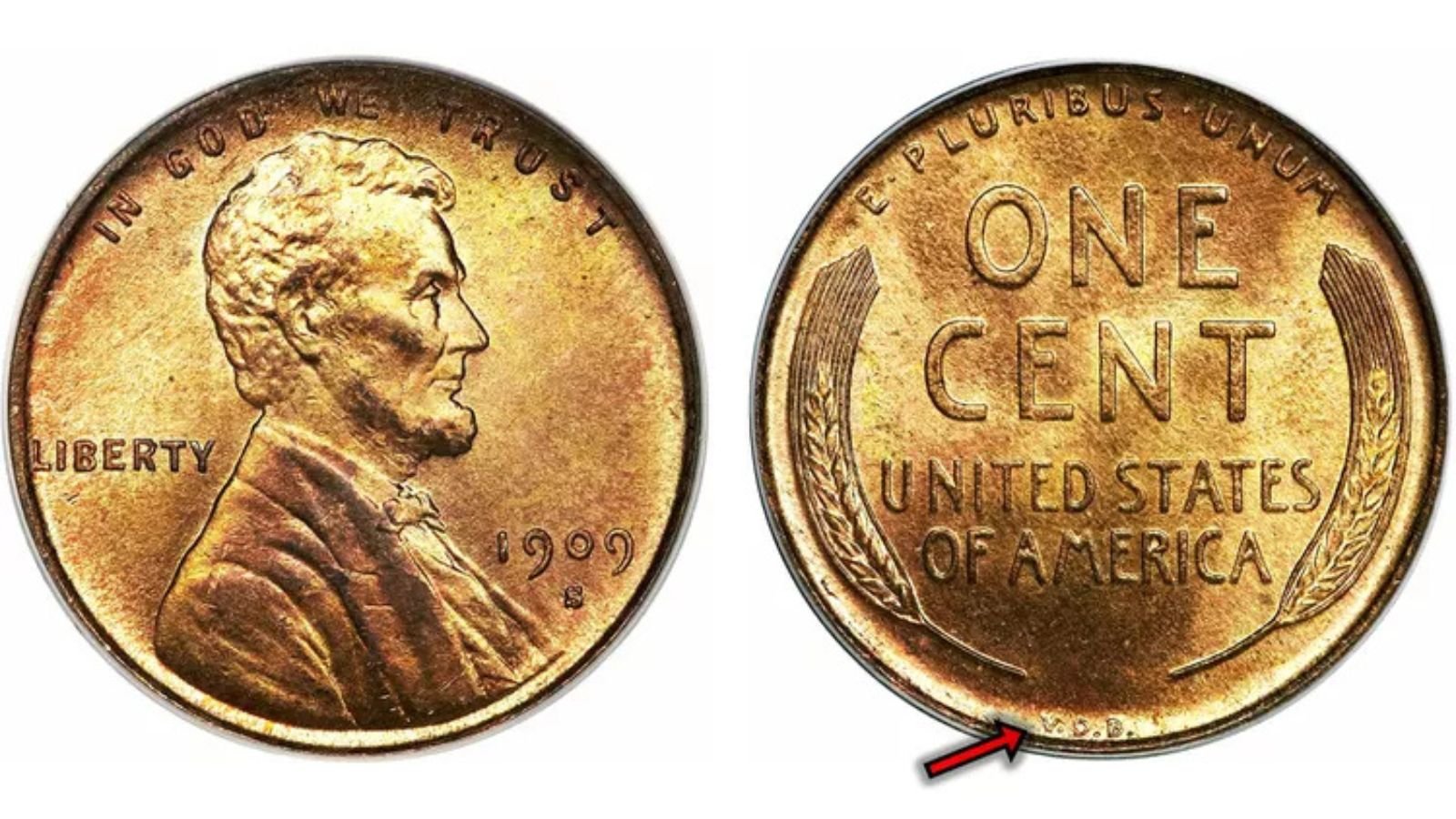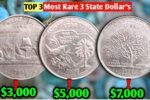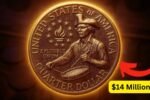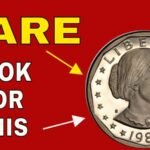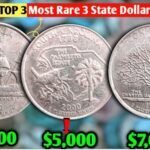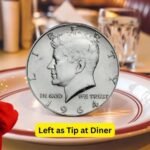For many people, the Lincoln Wheat Penny is just a small piece of copper tucked away in old piggy banks, dusty coin jars, or inherited collections. But for numismatists and collectors, this iconic coin can represent history, art, and, sometimes, serious value. Understanding which Lincoln Wheat Pennies are key dates, rare types, or error varieties can turn a common coin into a collectible worth hundreds, thousands, or even more.
What Is a Lincoln Wheat Penny?
The Lincoln Wheat Penny, officially called the Lincoln Wheat Cent, was produced from 1909 to 1958. It features President Abraham Lincoln on the obverse and two stalks of wheat curving around the words “One Cent” on the reverse. The design, created by Victor David Brenner, was the first U.S. coin to bear a real person’s likeness. These coins are typically made of copper, though some versions used alternate materials due to wartime metal shortages.
Though millions were produced, certain Lincoln Wheat Penny dates and mint marks stand out due to rarity, errors, or limited production. Knowing what to look for can make a significant difference in value.
Key Lincoln Wheat Penny Dates and Varieties
1909-S VDB
This coin marked the debut of the Lincoln cent, replacing the Indian Head penny. Designed by Victor D. Brenner, his initials “V.D.B.” appeared on the reverse between the wheat stalks. However, public backlash prompted their removal, making the 1909-S VDB extremely rare—only 484,000 were minted in San Francisco.
Counterfeits are common, particularly with added “S” mint marks. For authenticity and peace of mind, only purchase certified coins from reputable grading services.
- Estimated Average Sell Value (Circulated): $500
- Uncirculated Sell Value: $1,200
1909-S (No VDB)
After the controversy over the initials, the mint removed them entirely. The San Francisco mint still produced only 1,825,000 pieces, much fewer than the 72+ million struck in Philadelphia, adding to its scarcity and collector interest.
- Estimated Circulated Value: $70
- Uncirculated: $270
1909-S Over Horizontal S
This is a prime example of a re-punched mintmark (RPM). Before 1990, mintmarks were hand-punched, leading to human error. This variety shows a horizontal “S” underneath a correctly oriented “S,” visible under magnification.
- Circulated Value: $80
- Uncirculated Value: $270
1914-D
With only 1,193,000 produced, the 1914-D doesn’t have the lowest mintage, but it likely has one of the lowest survival rates. Many coins circulated heavily due to declining public interest in hoarding pennies.
Beware of forgeries with added mintmarks. Always verify with professional graders.
- Circulated: $150
- Uncirculated: $2,200
1917 Doubled Die Obverse
A true doubled die error, this coin shows doubled lettering in “TRUST” and the date. Unlike mechanical doubling, this results from a misalignment during die creation.
- Circulated: $160
- Uncirculated: $5,400
1922 No “D” Mint Mark
Because of a fire at the Philadelphia Mint, only Denver produced cents in 1922. But roughly 500,000 pieces lack the “D” due to a die error or clog. These are extremely rare and widely counterfeited.
- Circulated: $350
- Uncirculated: $12,100
1931-S
Struck during the Great Depression, only 866,000 were made. Anticipating its rarity, collectors hoarded many of these. While uncommon, it’s not as rare in high grades due to saved stock.
- Circulated: $60
- Uncirculated: $140
1943 Bronze Cents (Philadelphia, Denver, San Francisco)
In 1943, to preserve copper for WWII, the U.S. Mint produced steel pennies. However, some leftover bronze planchets were accidentally used. Authentic examples are incredibly rare and valuable.
Watch out for altered coins made by plating steel or altering 1948 dates to appear like 1943.
- Circulated: $14,000 – $50,000
- Uncirculated: $90,000 – $210,000
1944 Steel Cents (Philadelphia, Denver, San Francisco)
After public backlash, the Mint returned to bronze pennies in 1944. Still, a few steel planchets were used, possibly leftover from previous production or Belgian coinage.
- Circulated: $2,000 – $4,000
- Uncirculated: $70,000 – $90,000
1944-D D Over S
In this RPM variety, an “S” was punched first and then a “D” was applied over it. You’ll need a loupe to spot remnants of the “S” at the top of the “D.”
- Circulated: $50
- Uncirculated: $280
1955 Doubled Die Obverse
Known as the “King of Lincoln Cent Varieties,” this penny features dramatic doubling of the date and “IN GOD WE TRUST.” Highly desirable and often faked, authentication is critical.
- Circulated: $500
- Uncirculated: $1,900
How to Identify a Rare Lincoln Wheat Penny
If you think you’ve got something special in your coin jar, here’s how to begin:
- Check the date and mint mark: Focus on years like 1909, 1914, 1922, 1931, 1943, and 1955.
- Look for errors: Use magnification to spot doubled dies, re-punched mintmarks, or off-metal strikes.
- Weigh your coin: Some valuable errors have different weights due to incorrect planchets.
- Inspect the material: Steel pennies from 1943 will stick to magnets, unlike bronze varieties.
Authentication and Valuation
For high-value Lincoln Wheat Pennies, authentication is non-negotiable. Third-party grading services like PCGS and NGC provide legitimacy, grade, and encapsulate the coin for protection. Condition plays a crucial role—an uncirculated example can be worth many times more than one with wear.
Auction records, collector forums, and recent sale prices can also give you a realistic idea of a coin’s market value. Always cross-reference sources before making a big purchase or sale.
Protecting and Storing Your Collection
Even if you aren’t a full-time coin collector, proper storage can preserve value:
- Use coin flips or holders to prevent scratches.
- Avoid PVC-containing plastics, which degrade coins over time.
- Store in a cool, dry place to avoid corrosion.
Conclusion: Don’t Underestimate the Lincoln Wheat Penny
To the untrained eye, a Lincoln Wheat Penny might just look like an old coin, but those who dig a little deeper quickly realize its hidden potential. Whether you’re searching for the rare 1909-S VDB or the iconic 1955 doubled die, knowing what to look for is key.
Collecting Lincoln Wheat Pennies offers a unique window into American history and a chance to own something truly special. You might just discover that a coin worth one cent decades ago could now be valued at thousands—proof that the Lincoln Wheat Penny is far more than spare change.
Some Important Link
| Download News APP | Click Here |
| WhatsApp Group | Click Here |
| Home Page | Click Here |
